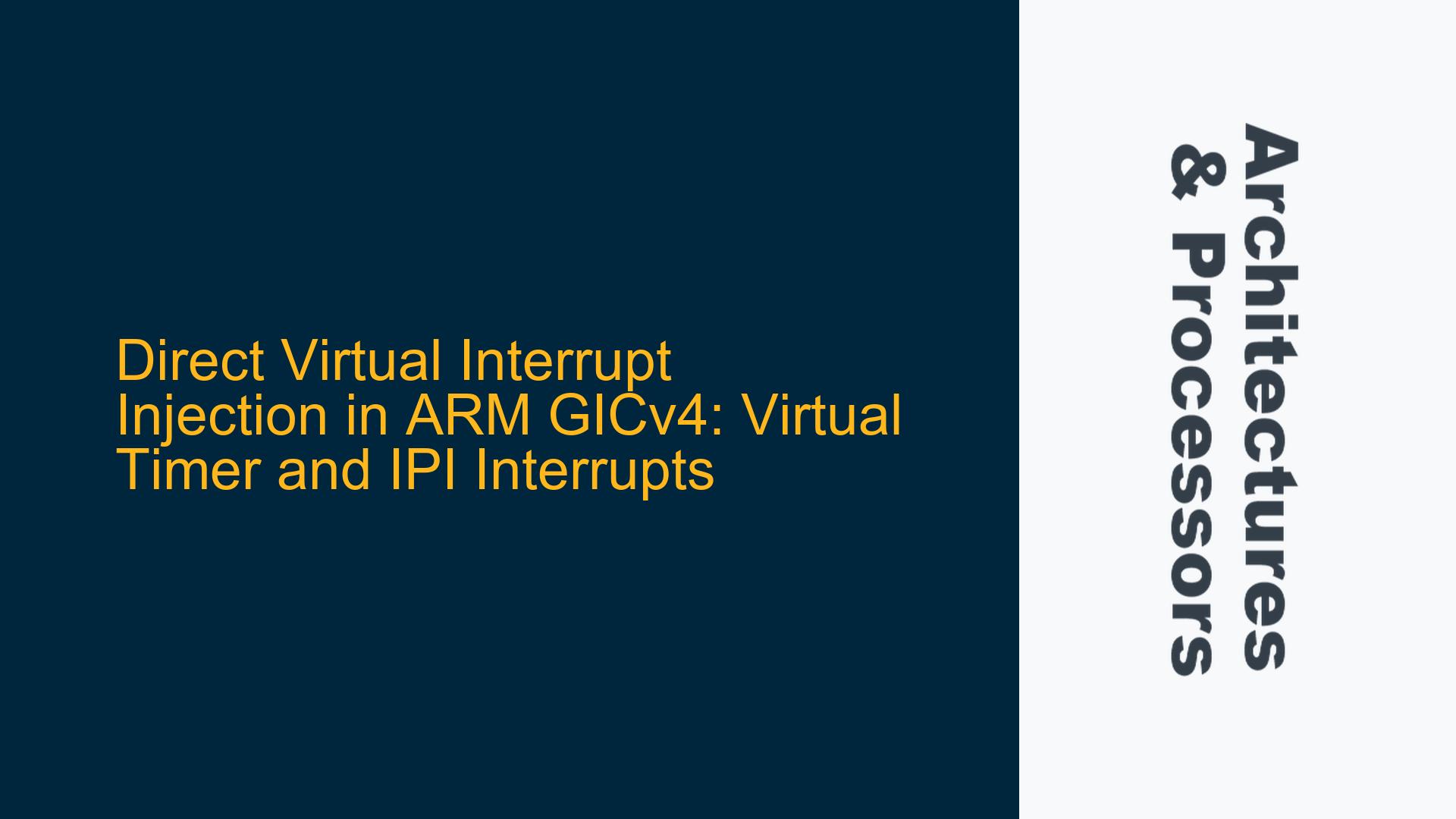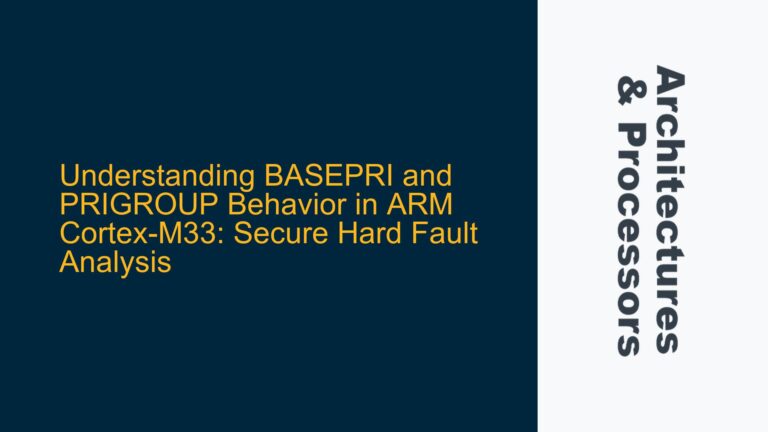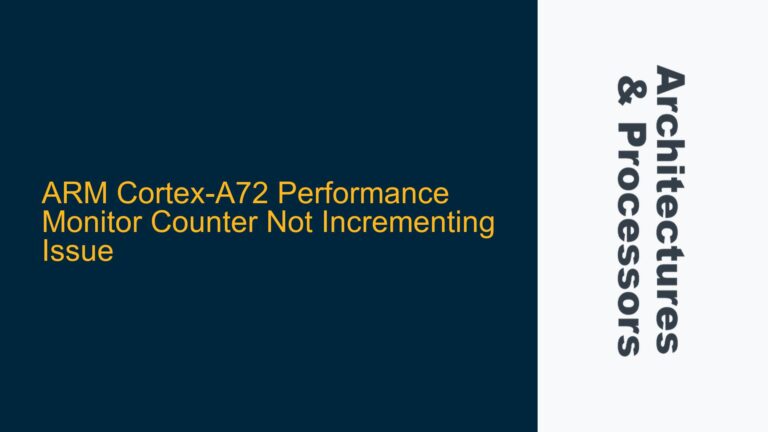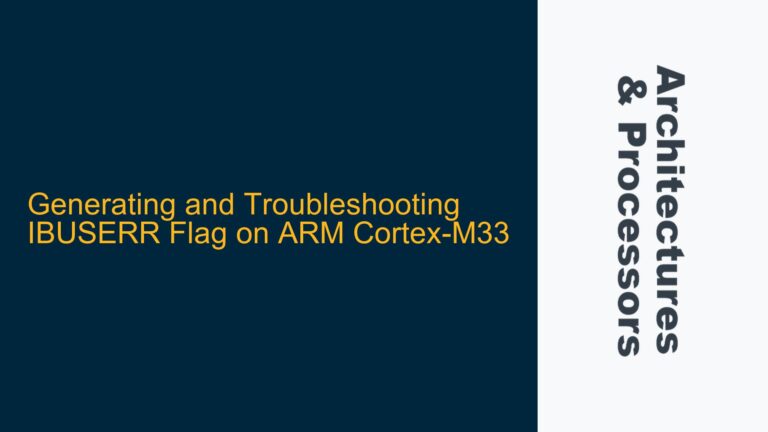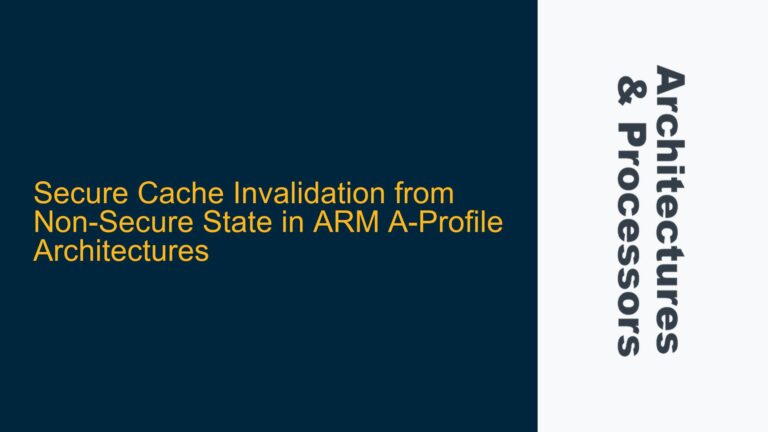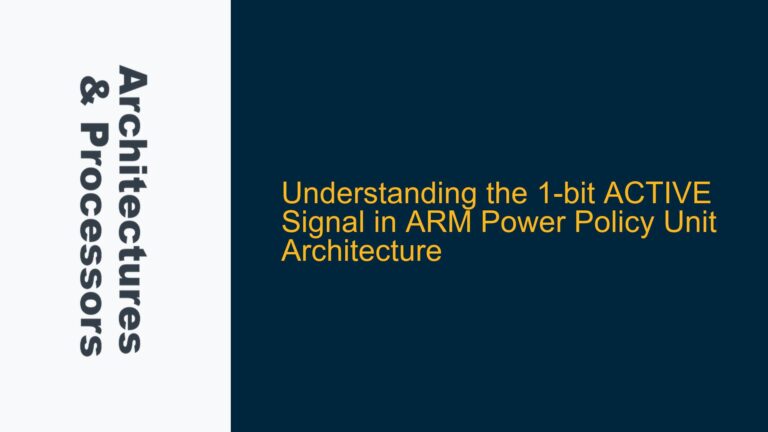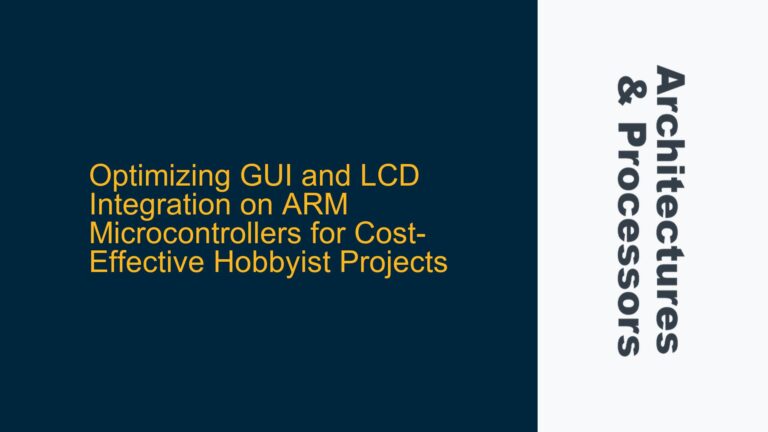ARM GICv4 Virtual Interrupt Injection Capabilities
The ARM Generic Interrupt Controller (GIC) architecture has evolved significantly over its versions, with GICv4 introducing support for virtual interrupt injection, specifically Virtual Locality-specific Peripheral Interrupts (vLPI). This capability is crucial for virtualization scenarios, where hypervisors manage multiple virtual machines (VMs) and need to efficiently handle interrupts for virtualized peripherals. The GICv4 architecture allows direct injection of virtual interrupts, such as virtual timer interrupts and Inter-Processor Interrupts (IPI), into VMs without requiring hypervisor intervention for each interrupt. This reduces latency and improves performance in virtualized environments.
The GICv4 architecture extends the GICv3 specification by adding support for direct injection of virtual interrupts. This is achieved through the use of virtual CPU interfaces and virtual redistributors, which are components of the GIC that handle interrupt routing and prioritization for virtual machines. The virtual CPU interface presents a virtualized view of the physical CPU interface to the VM, allowing the VM to handle interrupts as if it were running on bare metal. The virtual redistributor, on the other hand, manages the routing of virtual interrupts to the appropriate virtual CPU interface.
In the context of virtual timer interrupts, the GICv4 architecture allows the hypervisor to program the virtual timer directly into the virtual CPU interface. This means that when the virtual timer expires, the interrupt is directly injected into the VM without requiring the hypervisor to trap and emulate the interrupt. Similarly, for IPIs, the GICv4 architecture supports direct injection of virtual IPIs between virtual CPUs within the same VM, enabling efficient inter-processor communication without hypervisor involvement.
Virtual Interrupt Injection Mechanisms and Requirements
The direct injection of virtual interrupts in GICv4 relies on several key mechanisms and architectural features. First, the GICv4 architecture introduces the concept of virtual LPIs (vLPI), which are virtualized versions of the physical LPIs supported in GICv3. vLPIs are used to represent virtual interrupts that are directly injected into VMs. The GICv4 architecture also introduces new registers and data structures to manage vLPIs, including the Virtual LPI Pending Table (VLPI PT) and the Virtual LPI Configuration Table (VLPI CT).
The VLPI PT is a data structure that tracks the pending state of virtual LPIs. Each entry in the VLPI PT corresponds to a virtual LPI and indicates whether the interrupt is pending or not. The VLPI CT, on the other hand, stores the configuration information for each virtual LPI, including its priority and target virtual CPU. These tables are managed by the hypervisor, which is responsible for allocating and initializing them for each VM.
To enable direct injection of virtual interrupts, the GICv4 architecture also introduces new hardware features, such as the Virtual CPU Interface (vCPU Interface) and the Virtual Redistributor. The vCPU Interface is a virtualized version of the physical CPU interface and is presented to the VM by the hypervisor. The vCPU Interface allows the VM to handle virtual interrupts in the same way as physical interrupts, without requiring modifications to the guest operating system. The Virtual Redistributor, on the other hand, is responsible for routing virtual interrupts to the appropriate vCPU Interface.
The GICv4 architecture also requires support from the hypervisor to manage the virtual interrupt injection process. The hypervisor must configure the GICv4 hardware to enable direct injection of virtual interrupts and must also handle any exceptions or errors that may occur during the injection process. Additionally, the hypervisor must ensure that the virtual interrupt injection process does not interfere with the operation of other VMs or the hypervisor itself.
Implementing Direct Virtual Interrupt Injection in GICv4
Implementing direct virtual interrupt injection in GICv4 involves several steps, including configuring the GICv4 hardware, initializing the virtual interrupt tables, and managing the virtual interrupt injection process. The first step is to configure the GICv4 hardware to enable direct injection of virtual interrupts. This involves setting up the vCPU Interface and Virtual Redistributor for each VM and configuring the GICv4 registers to enable virtual interrupt injection.
Once the GICv4 hardware is configured, the next step is to initialize the virtual interrupt tables, including the VLPI PT and VLPI CT. The hypervisor must allocate memory for these tables and initialize them with the appropriate values for each VM. The VLPI PT must be initialized to indicate that no virtual interrupts are pending, while the VLPI CT must be initialized with the configuration information for each virtual LPI, including its priority and target virtual CPU.
After the virtual interrupt tables are initialized, the hypervisor can begin managing the virtual interrupt injection process. This involves monitoring the state of the virtual interrupts and injecting them into the appropriate vCPU Interface when they become pending. The hypervisor must also handle any exceptions or errors that may occur during the virtual interrupt injection process, such as invalid virtual interrupt configurations or conflicts between virtual interrupts.
In addition to managing the virtual interrupt injection process, the hypervisor must also ensure that the virtual interrupt injection process does not interfere with the operation of other VMs or the hypervisor itself. This may involve implementing mechanisms to prioritize virtual interrupts or to limit the rate at which virtual interrupts are injected into a VM. The hypervisor must also ensure that the virtual interrupt injection process is secure and that virtual interrupts cannot be used to compromise the security of the hypervisor or other VMs.
In conclusion, the GICv4 architecture provides powerful capabilities for direct injection of virtual interrupts, including virtual timer interrupts and IPIs. By leveraging these capabilities, hypervisors can significantly improve the performance and efficiency of virtualized environments. However, implementing direct virtual interrupt injection in GICv4 requires careful configuration and management of the GICv4 hardware and virtual interrupt tables, as well as robust mechanisms for handling exceptions and ensuring security. With proper implementation, direct virtual interrupt injection can provide significant benefits for virtualized systems, reducing latency and improving overall system performance.
